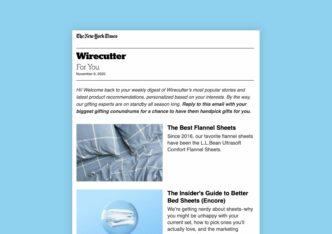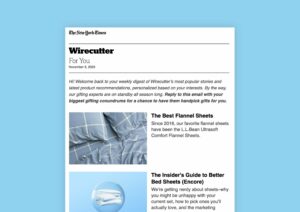

For years, smartocto has advocated a focus on user needs as the key to building an engaged, loyal audience. The data continues to prove it works.
This piece by Stefan ten Teije of smartocto is structured in three parts:
> Fresh research showing that articles with a clear user needs perspective consistently perform better
> An inspiring use case from Nederlands Dagblad, demonstrating the power of growth hack experiments rooted in user needs
> Practical tips for anyone ready to implement this approach in their own newsroom.
Since the launch of the User Needs Model 2.0 and its 2023 whitepaper, we’ve been searching for the ‘smoking gun’: clear evidence that articles shaped around a specific user need outperform ones which aren’t. By outperform we mean both reach and engagement.
We recently found that proof in a collaboration with Dmitry Shishkin at Ringier Media International, who also partnered with us during his time as an independent consultant.
We analysed a large dataset: 16,021 articles across Ringier Media International’s brands, categorised as either:
- User need-focused articles
- Non-focused articles
Of those, 4,445 articles scored at least 60% on one of the model’s four drivers: know, understand, feel and do. These were then compared with articles showing a weaker focus.
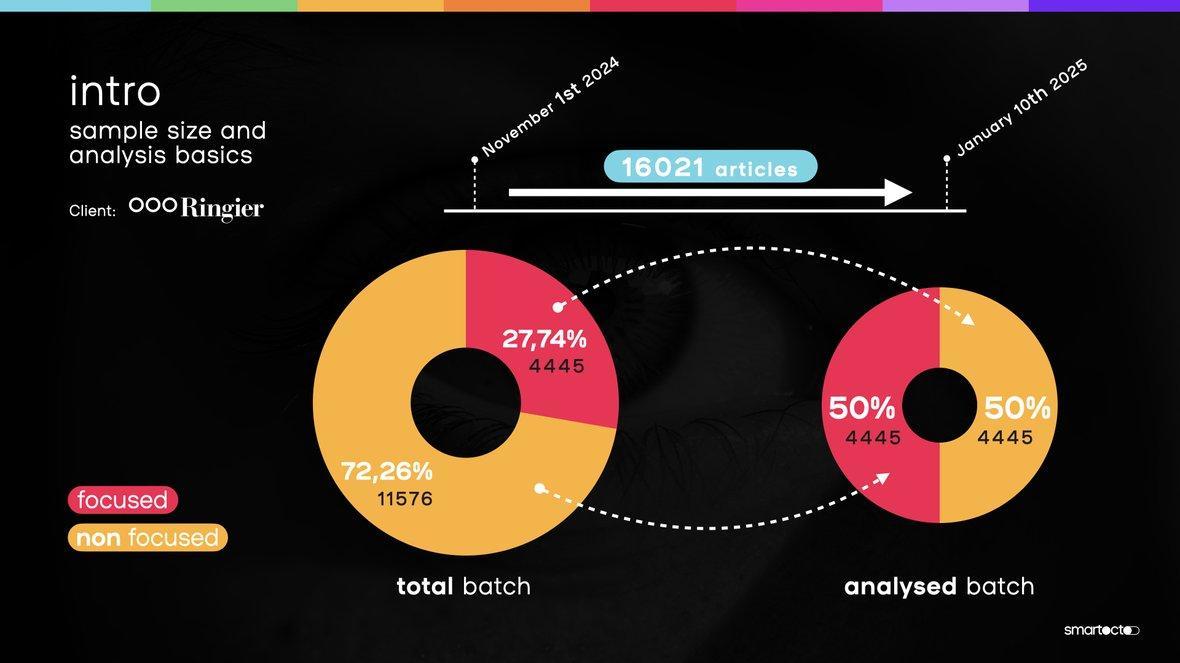
The results were striking. User need-focused articles performed 31% better on engagement, were read 55% more often by loyal visitors, and those visitors returned 40% more frequently. They also read deeper into each article and explored more pages (+9% on both). Across every metric, articles with a clear user needs focus came out ahead.
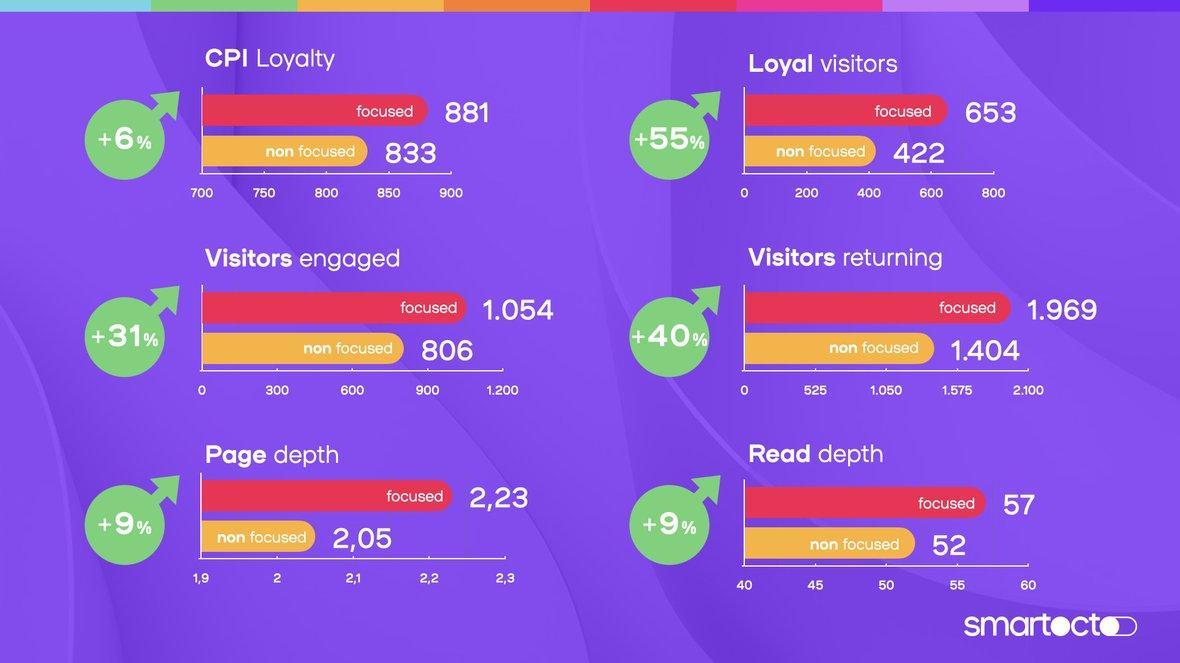
> To read next: Adapting user needs to your audience: what are other publishers doing?
First a baseline, then experiments
This confirmed what we had already seen in newsrooms adopting the approach: improved performance across the board.
Take the User Needs Labs programme, which we’ve now run with 20 media brands, most recently with FT Strategies. It always starts with a baseline report. That’s our top recommendation for any media outlet looking to begin: get a clear view of their current strengths and weaknesses.
A baseline report is a user needs mirror. It shows which needs your content meets, and which types of stories your audience values most.
In the example below, based on smartocto client Nederlands Dagblad, the newsroom produced a large amount of ‘Update me’ and ‘Educate me’ content. Yet, stories aligned with five other user needs generated higher median pageviews and stronger engagement.
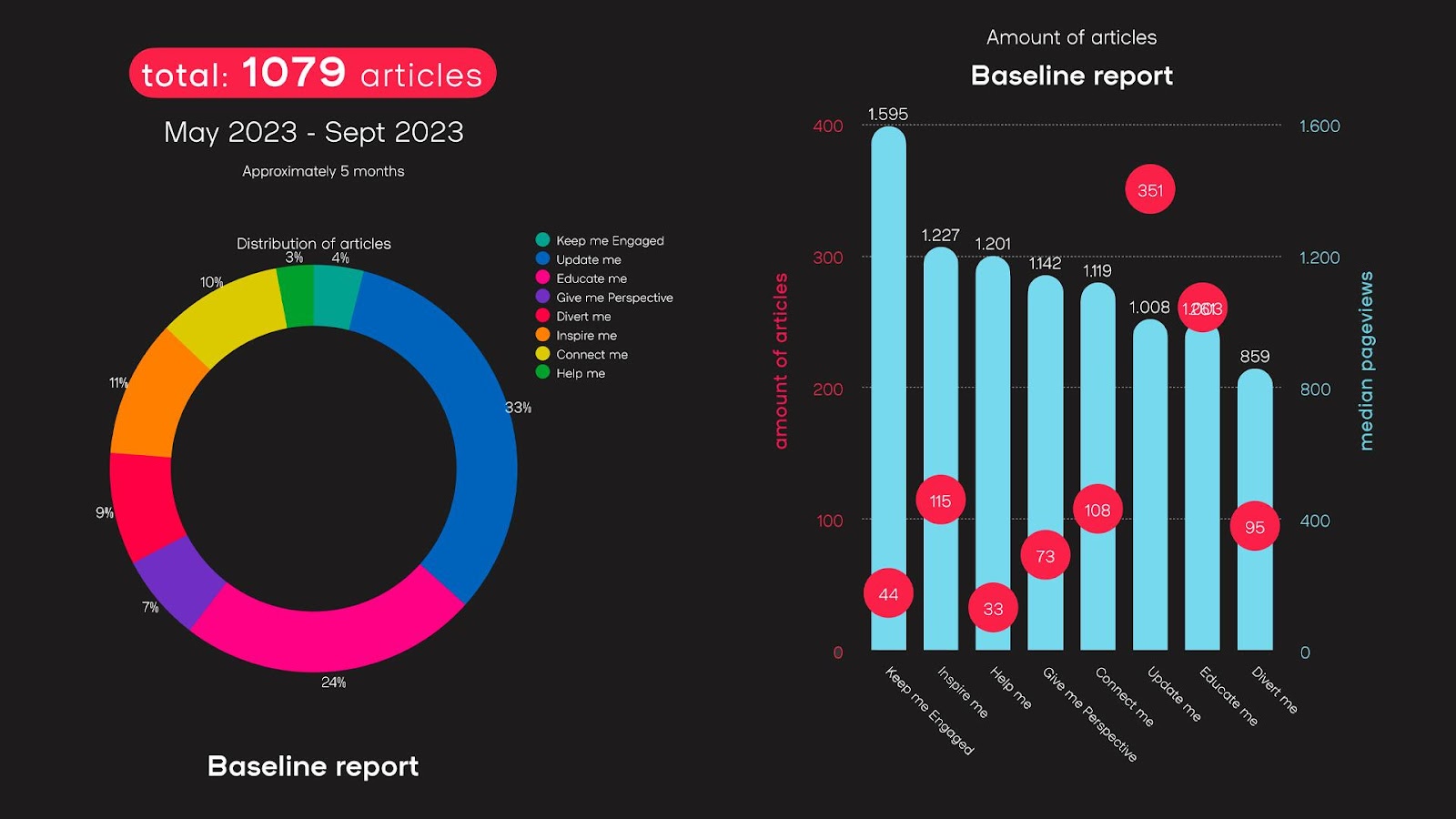
Additionally, engagement was higher for needs other than the most commonly produced ones.
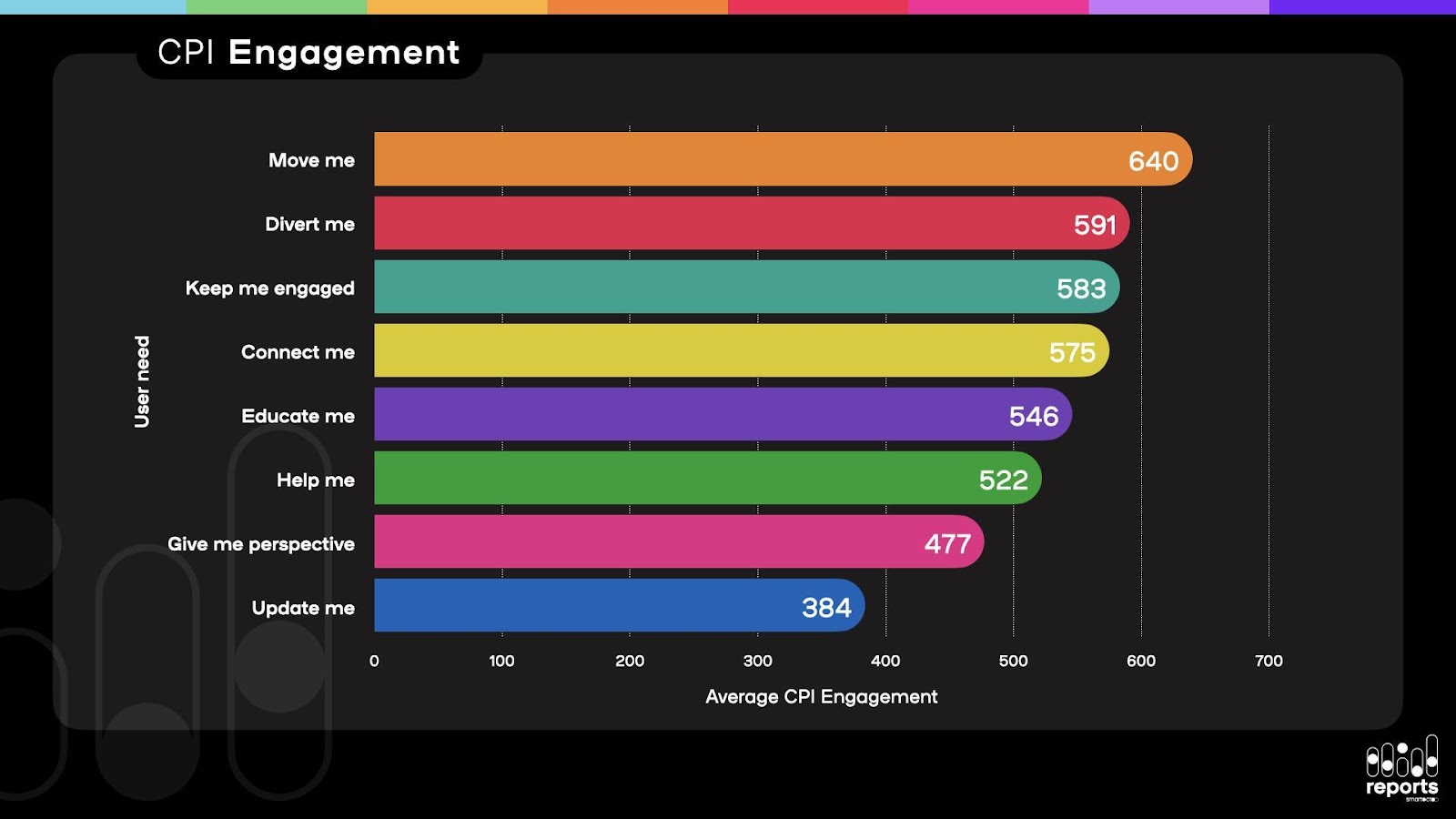
The best-performing publishers serve the audience with a variety of user needs. Therefore, in this case, the conclusions about the strengths and weaknesses were as follows:
- The newsroom produces too many ‘Update me’ and ‘Educate me’ stories.
- The newsroom produces too few ‘Give me perspective’, ‘Connect me’, and ‘Inspire me’ stories, although this particular brand refers to the latter as ‘Move me’.
That’s where growth hacks come in: small editorial changes that lead to measurable growth. They sound simple, but they work. In this case:
- Reduce ‘Update me’ and ‘Educate me’ stories
- Increase output for better-performing user needs
Have the growth hacks worked?
Yes. These were successful growth hacks for Nederlands Dagblad. The newsroom took action, and it paid off. You can see the results in the growth hack report:
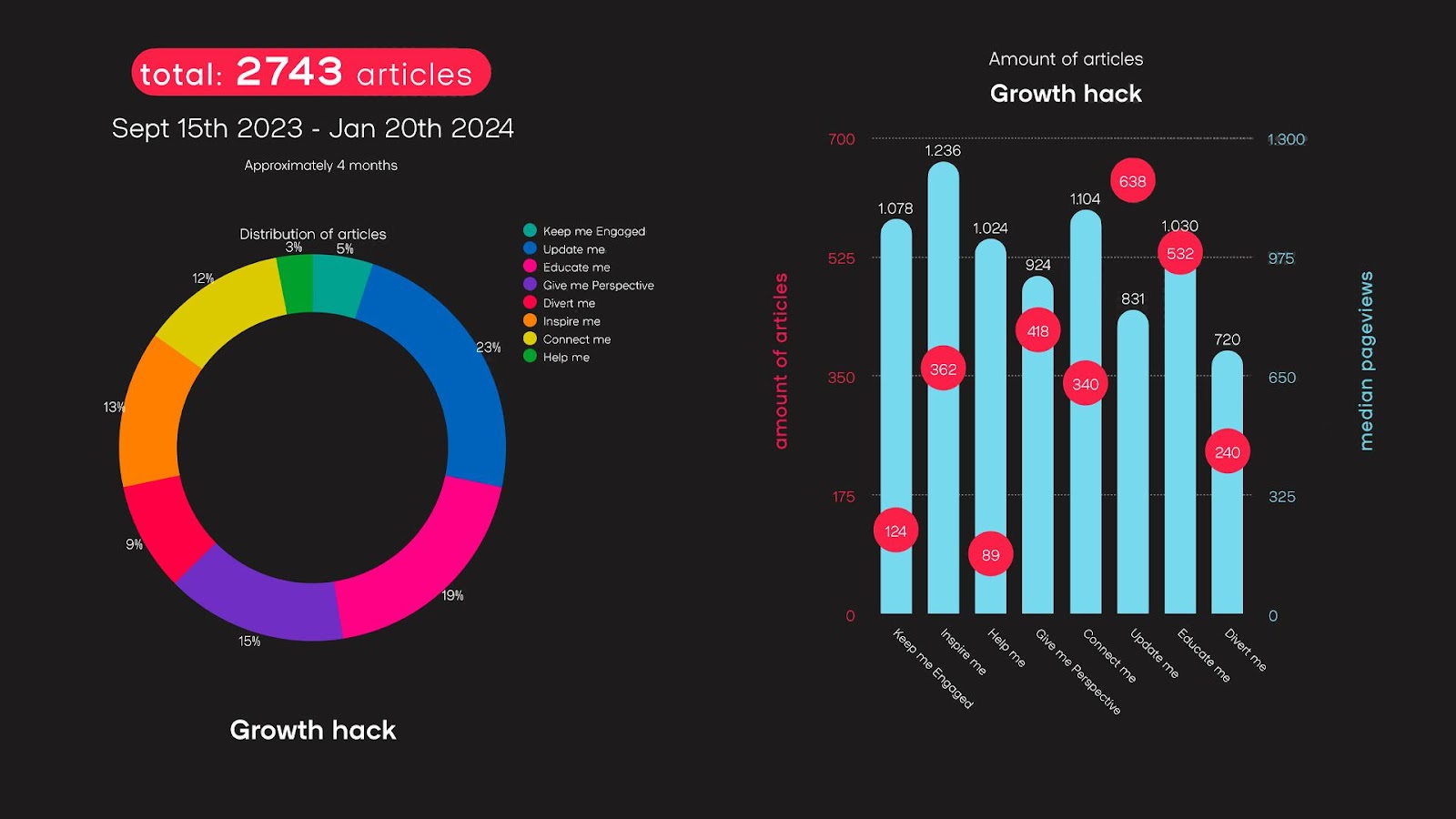
Results:
- Production of ‘Update me’ articles went down from 33% to 23%. ‘Educate me’ went down from 24% to 19%.
- They created more ‘Give me perspective’, ‘Inspire me’ and ‘Connect me’ content.
The median pageviews decreased for ‘Update me’, but for all user needs that attract more visitors, it appears that the overall reach does not decline when significantly more content is produced. This increases the overall reach.
Fortunately, something even more remarkable happened with this brand: engagement increased significantly across all user needs, with an average rise of 29 percent.
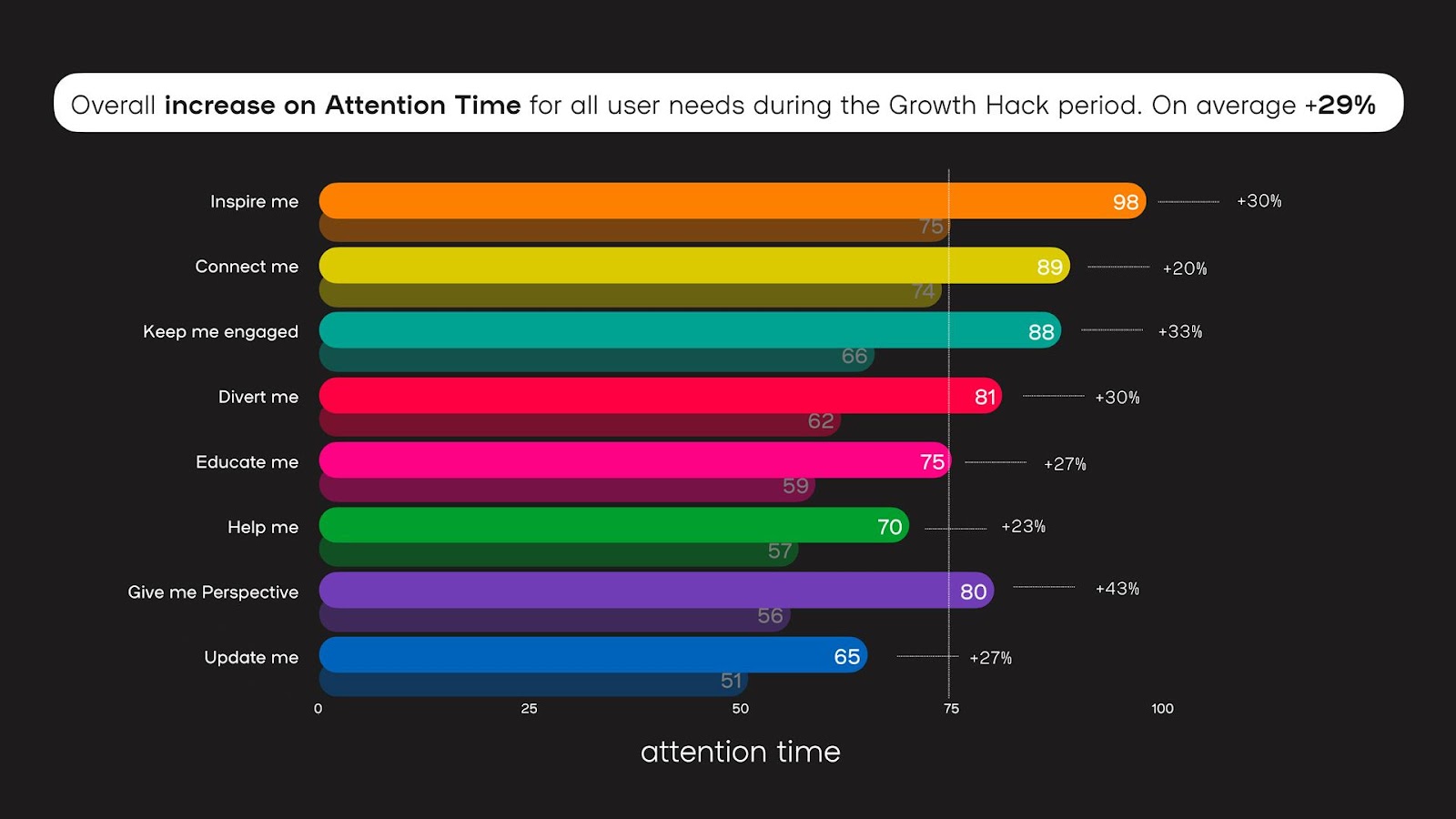
That said, results across the wider programme weren’t always as dramatic. In some cases, internal challenges held progress back. Newsrooms often struggle to prioritise editorial innovation over the demands of daily news production.
In an interview with Finnish newspaper Turun Sanomat, for example, cultural change within the newsroom took longer than expected. That’s normal. Change always takes time.
But let’s not overcomplicate things. This isn’t rocket science. The user needs approach is about editorial clarity and smarter choices. Here are some practical tips to get started:
Tips for the Growth Hack period
- Focus on just one or two things. You need to have a clear view on the outcome and it needs to be feasible for the newsroom. Maybe even focus on one section.
- Think about what metric you would like to improve. Is it CPI per user need? Is it pageviews or attention time? Think about what ‘success’ means for your organisation.
- Make user needs part of every meeting you’ll have for planning content.
- Keep a finger on the pulse. Check weekly. If you wanted to create more emotion driven content, did youid achieve that goal? Why not? How will you reach that goal next week?.
- Make sure the tagging is straight. This might be worth looking at weekly. Do editors tag correctly?
- Make it fun. It shouldn’t be hard. The user needs approach is about having an editorial conversation about content. It’s about improving the quality of your work. Celebrate wins and losses. You’ll always learn!



